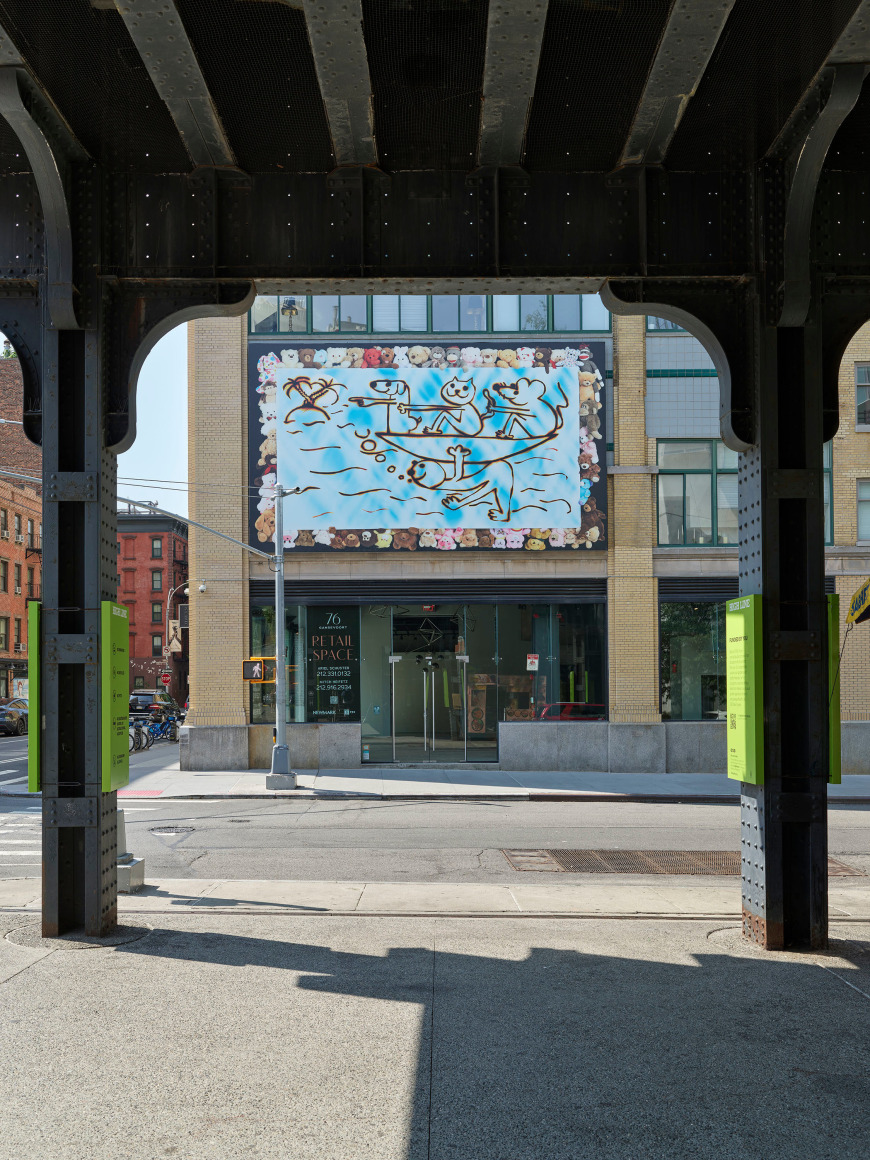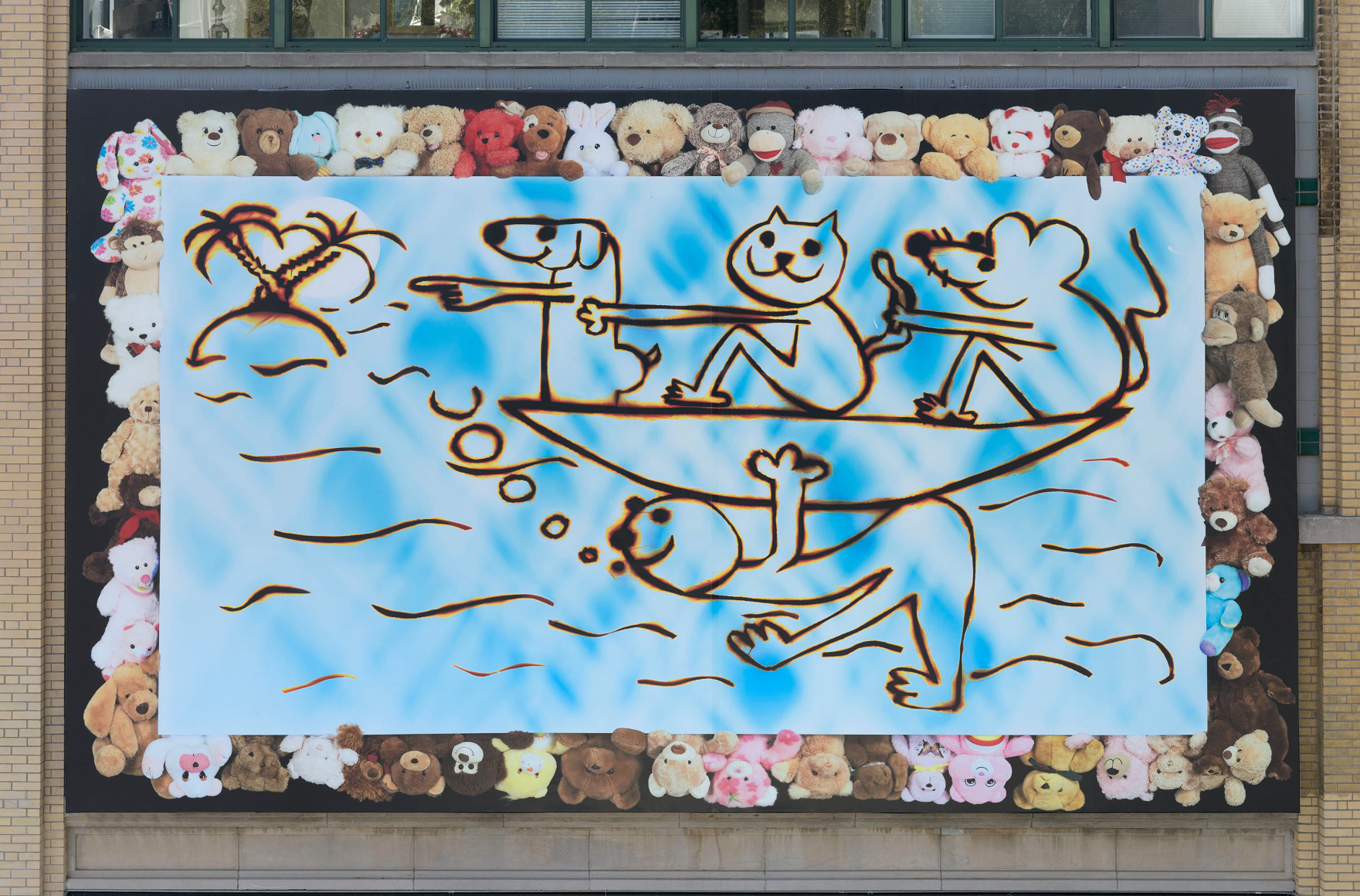A dog, cat, and mouse in a boat—with a human oddly positioned below—point toward and approach an island paradise. Where did they leave, and why? Where are they going, and how will they be received? In the new, site-specific work Almost There, Hadi Falapishi presents an allegory of migration that engages with the museum’s location along the Hudson River, as well as the geography and history of Manhattan more broadly. The billboard enlarges one of his photograms—a unique, cameraless photograph produced by burning an image into photosensitive paper with a flashlight. Almost There strikingly brings the original photo work, made in complete isolation and darkness, out into the public and under the sun and sky. The title suggests promise—of America, of democracy, of utopia, or whatever the tropical island may represent—but also the distance to it.
Born in Tehran, Iran in 1987 and now based in New York after moving to the U.S. to study for an MFA in 2013, Falapishi’s practice began with cameraless photographs, but now extends to sculptures, installations, paintings, and drawings. His art uses deceptively childish and humorous iconography to depict the crude and problematic interrelationships that structure society. The vignettes Falapishi creates sometimes contain perplexing or disturbing undertones that contrast with the juvenile motifs. His subject is the system in which we live, rather than the individual—transcending the artist’s biography, though that too may be relevant. The ambiguity of the scenarios obliges viewers to actively make their own sense of meaning, and of morality.
This project is organized by Lauren Young, Senior Curatorial Assistant at the Whitney Museum of American Art.


